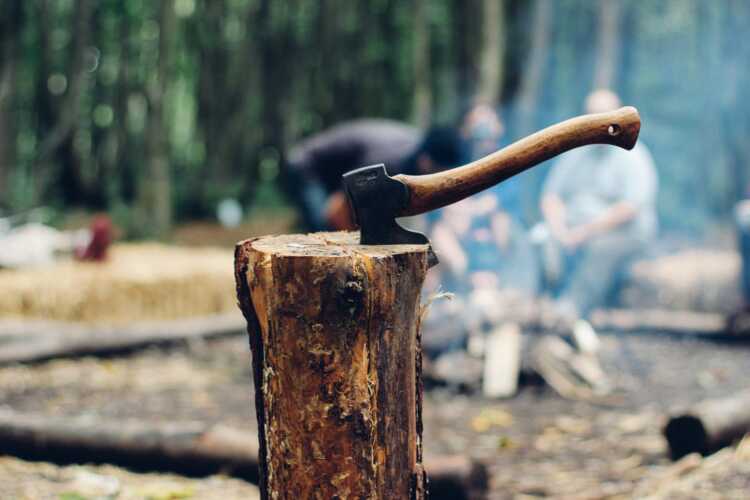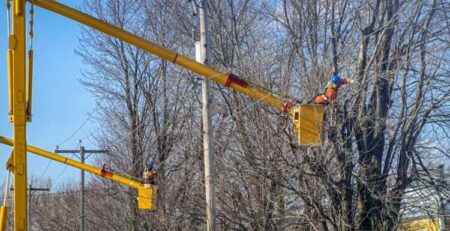Will Homeowners Insurance Cover Tree Removal?
Will homeowners’ insurance cover tree removal? You might think this question would have a simple yes or no answer, but since the answer is ‘yes and no’, there’s clearly a lot more to think about. The truth is that your home insurance might cover tree removal costs, but then again, it might not be. It will all depend on the reason that the tree needs removing and the type of policy you have. So let’s look a little close and see what the details are.
 When Does Home Insurance Cover Tree Removal?
When Does Home Insurance Cover Tree Removal?
When reading through your insurance policy, you might spot ‘named perils’ mentioned. These are, as the name suggests, expressly stated problems. They will usually include lightning, fire, smoke, or even falling objects. In the simplest terms, if one of these perils is the reason for having a tree removed, then your insurance should cover it, although it might also be dependent on whether the tree did any damage to your property.
An example of this would be a tree in your garden that was struck by lightning, which caused it to split in two. Your insurance should pay for the removal of this tree even if it did no damage to your property because most standard policies will include lightning as a named peril. However, if the same tree blew down through high winds and did not damage your home, insurance wouldn’t cover the removal because the wind is not a named peril.
If the tree that fell due to high winds landed on your roof or broke a window, or damaged your property in any other way, then your insurance would pay as the damage to your property would supersede anything else. The differences might be subtle when you’re looking at what happened, but in terms of your insurance, they are big, and they make a lot of impact on the end result of your claim.
This is why insurance can be complicated, and it’s always wise to know what your policy says before assuming you can make a claim when you can’t or assuming you can’t when you can.
When Doesn’t Home Insurance Cover Tree Removal?
As we’ve already seen, your home insurance won’t cover tree removals if the tree was damaged by something other than a named peril unless that damage has caused your property to be damaged also. So, if a tree is blown over or gets knocked down by heavy snow, and it lands on your lawn, it might be an inconvenience to have it there, but if you want it removed, you’ll need to arrange – and pay for – the tree removal company yourself.
However, once again, things are not quite as simple as that when it comes to insurance, and there are some other instances when most standard insurances won’t pay out for tree removal.
If, for example, you live on a flood plain and your tree sustains damage because of a flood, your insurance is unlikely to pay, just as it wouldn’t pay if flooding damaged your home. If you want this eventuality to be covered, you may need to buy an additional policy that does cover the problem, although this will cost more – often a great deal more.
As well as this, a tree that has fallen due to old age or disease won’t usually be covered on your insurance either. But of course, this is where the insurance issue can become problematic. What happens if a named peril causes a tree to fall, but it was old or rotting or diseased? Would your insurance cover that? Probably not. If the investigation shows that the tree was problematic before the damage that caused it to fall, the insurance company may well say that had the tree not been old or rotting, then the named peril would not have caused the amount of damage that it did. Hence, no pay out.
Limits For Tree Removal Cost
No matter how much coverage your home insurance gives you, and no matter what cost of the excess you’ll need to pay, there are always going to be limits. When it comes to tree removal costs, those limits are just as prevalent as they are for anything else. You might find that there is an upper limit that the insurance will pay, meaning that, if the tree removal costs are higher than that upper limit, you will need to bridge the gap. Or it could be that your insurers will pay out a percentage of the cost of the total insurance taken out on your property.
Whichever one of these options it is, you may well need to add to the cost, so it’s wise to be aware of this and understand what the price of any tree removal services might be. Unlike most other fully covered services on your insurance policy or ones that don’t cost too much, tree removal is an expensive task. Depending on the company you use, there might be a large sum still to pay, even if your insurance does cover the damage. Despite this, it’s crucial to bear in mind that these costs are necessary; tree removal is a dangerous, demanding job that involves its own high levels of insurance as well as expensive equipment. Don’t try to get out of paying anything you need to add to the bill by choosing a cheaper company (assuming your insurance doesn’t specify who you must use) as this could mean a lack of insurance or training, and it might cause more problems than it solves.
Should You File A Claim?
When a named peril damages a tree, your first thought will probably be to file a claim with your insurer and to arrange for the removal of the tree.
However, although this is often the best course of action, there are some things to consider before going down this path. The first is the overall cost. Depending on your excess fee and the amount that your insurer will contribute to the tree removal cost, you may not be that much better off by claiming. A large excess and a small coverage could add up to you having to pay for almost all of the tree removal costs anyway. In this case, despite the small saving you would make, when you consider that your insurance premiums are likely to go up after making a claim, you’ll need to decide whether or not it’s actually worth it to claim.
It might be better to simply arrange for and pay for the tree removal yourself and keep your insurance policies down.
Equally, if you don’t have a lot of choice when it comes to which company you are able to use because your insurer has a list of specific tree removal experts they work with, you might not be overly happy with that limited choice. Perhaps you’ve worked with another company in the past and you know they will do a good job, or maybe you would simply rather do your own research so that you know professionals are carrying out the work. In this case, assuming your insurance company doesn’t offer you any kind of leeway on your choices, you might simply want to bypass them and organise the job yourself.
Do bear in mind, though, that when you use a company that your insurers have selected, they will already have carried out the vetting process. On top of that, you may receive additional warranties and special offers for the future that you wouldn’t have had otherwise. It’s a big decision to make, and there are pros and cons either way.
How To Prevent Trees From Falling In The First Place
Of course, ideally you wouldn’t need to make a claim at all. You wouldn’t have a tree that had fallen – for whatever reason – and caused damage to your home. And although in some cases there isn’t a lot you can do to prevent the accident from occurring, there are some things you can do to prevent the tree from falling if that accident takes place.
Firstly, be proactive. If any trees are old, rotten, diseased, or otherwise at risk of falling, have them removed before they cause any damage and before they present a danger to anyone nearby. Yes, this will cost you money, but since it will cost you money to remove the trees after they fall anyway, and since this will reduce the risk of damage to your home or injuring anyone, it’s a good idea.
Secondly, learn more about what causes a tree to be unhealthy (and therefore more likely to fall). There are many signs to look out for, including exposed roots, a tree that leans, split trunks, and more. If you’re not sure, have an expert check things over for you. They’ll be able to let you know whether or not you should have any trees removed before they become too problematic.







